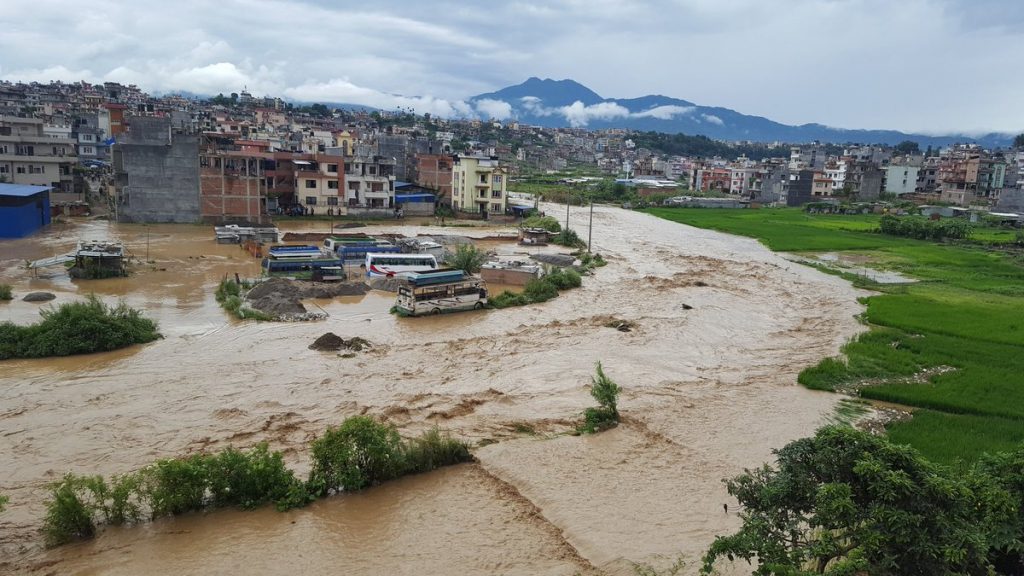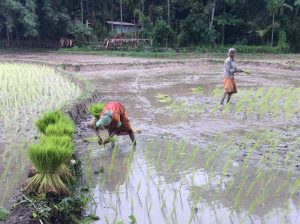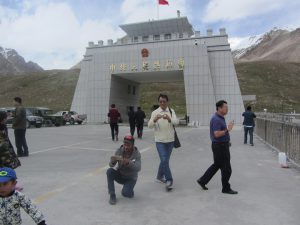Mumbai’s streets turned to rivers last week as five inches of rain fell on the city in one day. Public transport was brought to a standstill, railway platforms and steps in the city turned into waterfalls, and thousands were forced to wade through waist-deep water.
Flooding is common in low-lying parts of Mumbai, but nothing of this magnitude has been seen in recent years — especially none since the 2005 floods which killed 500 people.
Heavy rains and flooding struck Mumbai at the same time as numerous similar weather events around the world. Hurricane Harvey battered the state of Texas in the United States, leaving thousands stranded and submerging overpasses. In Macau, the most severe storm in 53 years killed nine people and left thousands without power.
Meanwhile, large swathes of Bangladesh, north-east India and southern Nepal are still dealing with heavy rains and flooding that killed 1,200 people and forced millions from their homes. More than 7.4 million people have been affected in Bangladesh, and around 700,000 houses have been destroyed or damaged. In Assam, 450,000 people are taking shelter in relief camps after a wave of flooding left a trail of devastation. And in Nepal’s worst flooding incident in a decade, 150 people died and 90,000 homes were destroyed.
As extreme weather events become more intense, and more frequent, our writers share their experiences of the worst floods to strike south Asia in years.
Dhaka: Waterlogging due to encroachments on canals and floodplains
Rain and waterlogging is common in Dhaka during the monsoon. We face it in almost every neighbourhood. But this year, on July 12, life came to a standstill as office-goers and schoolchildren faced indescribable suffering in this city of 15 million people, while the Met office recorded 103 millimetres of rainfall in 24 hours.
I saw people stuck on roads for hours, children crying in the street. The traffic control system broke down and heavy rain caused severe damage to the roads. The situation was worse in areas where roads were being dug by various agencies for projects, such as a flyover and an elevated expressway.
Going to work the next morning, I met Shariful Islam, 27, a labourer working at a construction site in the Moghbazar neighbourhood. He earns BDT 500-550 (USD 6.20-6.80) per day. He could not work the previous day, so his family went unfed. He even borrowed money from a neighbour to buy some vegetables, but the supply trucks were missing, the prices had gone up, and he couldn’t afford to buy anything.
I was brought up in Dhaka, and this happens every year. And every year, I see the authorities starting to dig roads just before the monsoon. Neighbourhoods are sent notices to avoid those roads and then they start to repair the drainage system, which never improves. It seems never-ending.
Dhaka’s Water and Sanitation Authority is supposed to maintain the drains. But the 26 canals that surround Bangladesh’s capital, and are a crucial part of the drainage system, belong to another department. They bicker while the residents suffer. Even without considering the climate, the likely damage from waterlogging in Dhaka by 2050 will be BDT 11,000 crore (USD 1.36 billion), according to a 2015 World Bank study. And in a changing climate with more intense rainfalls like this year, the loss will be BDT 13,900 crore (USD 1.72 billion).
The government needs to take immediate action to reclaim the lost floodplains and canals. Otherwise, the city will need to be abandoned soon.
Zobaidur Rahman
Kathmandu: This was not a flood problem alone — bad urban planning played its part

On August 11, two months after the monsoon clouds arrived over Nepal from the Bay of Bengal, the government issued a major countrywide flood alert, with a special warning for the east. By next morning, the Nakkhu river — a few kilometres away from my house in southern Kathmandu — had swollen. Paddy fields were submerged and houses were inundated due to the heavy rains throughout the night and early morning. This is a river that carries no water when there is no rain and people hardly notice it while crossing the bridge over the dry riverbed everyday.
With 6,000 rivers and rivulets, floods aren’t unusual in this mountainous country, but this was one of the most devastating in the last decade. Usually the three major rivers — the Koshi, Gandaki and Karnali — wreak havoc, but this time the majority of losses were caused by small rivers and rivulets inundating cities such as Biratnagar and Kathmandu. In just three days, 110 people died in floods and landslides and thousands were forced to flee their homes. The destruction amounts to billions of rupees.
Treated as dumping sites, the nose senses the capital’s rivers before the ears. As it’s hard to see the rivers flowing, except in monsoons, people forget that they still exist in the eight dry months of the year. Rapid development has severely reduced the water recharge areas, land fragmentation is high and water flow ways have been blocked due to road constructions and other infrastructure projects.
With 99.8 mm of rainfall falling in an hour in Banke district and 513 mm of rainfall falling in 24 hours in central Heatuda, this year’s rains broke decade-long records. No reasons have been given by the authorities about the trend of such patterns, but initial reactions are that it’s more about the lack of disaster preparedness than rainfall. This was not a flood problem alone; the inundation was helped by degradation of land and bad urban planning.
Ramesh Bhushal
Karachi: Thunder, lightning and downpours, but the city is not ready to deal with this new phenomenon
For years, climate experts have told me in interviews that global warming will bring more extreme weather events including heavy and sudden downpours. But it wasn’t until last week that I experienced them for myself here in Karachi.
The rains were nothing like those we used to experience during the monsoon; three or four days of continuous and gentle rains, making it cool enough to switch off the air conditioning. This time, the day would start bright, sunny and humid but with no indication that it would change in just a few hours. By mid morning, the sky would scowl and darken, thunder would roll and a heavy downpour would begin, lasting for only half an hour. Then the sun would return in all its fury and the humidity and temperatures continue to rise. By evening the usual sea breeze provided some respite.
During the most recent storm on August 23, lightning lit up the sky and the thunder was louder than ever. Then all hell broke loose and it began to rain. I was not surprised by the death toll. Nineteen people died, either by electrocution, falling billboards or collapsing roofs, highlighting the ineptitude of the city’s administration once more. Some 340 dilapidated buildings are vulnerable to collapse any time, according to the head of the Sindh Building Control Authority. The rains just made them all the more vulnerable.
In Lahore, where I lived 30 years ago, it rains often but life goes on during the deluge. But in Karachi, rain brings everything to a standstill — no school, no office. As soon as ominous clouds gather people try to beat the rain and the traffic jams to get home, because if you get caught in a downpour, you may have to wade through the deluge. Cars and motorbikes are abandoned on roadsides, while municipality workers try to pump out water onto road embankments.
I think this will be the new normal for Karachi, but what’s terrifying is that the people and the city administration seem completely unprepared to deal with this new phenomenon.
Zofeen T. Ebrahim
In India, too, people were caught unprepared. Cities across the country experienced massive flooding even before Mumbai, but as a recent report in indiaclimatedialogue.net pointed out, these extreme weather events were combined with urban planning problems, similar to those in Dhaka, Karachi and Kathmandu. As we had reported earlier this year, India is going through a massive phase of urbanisation, often at the cost of its wetlands. The loss of the wetlands and their ability to soak up excess rainwater leaves urban areas more and more at risk to flooding.
As the floodwaters recede, South Asian policymakers have to come to an understanding that their cities – the key to growth and poverty reduction – are increasingly vulnerable and cannot continue to be managed in a manner that ignores sustainability.
![<p>A boy swims through a flooded street in Ramgaduwa in southern Nepal [image by Munna Saraff]</p>](https://dialogue.earth/content/uploads/2017/08/09.jpg)


![Photograph of Alcu the elusive leopard at the snow leopard rehabilitation centre, Issyk-Kul [image by: Juhi Chaudhary]](https://dialogue.earth/content/uploads/2017/09/Snow-leopard1-300x225.jpg)



![A woman pumps up water from a tubewell in West Bengal despite the red cross that signifies that there is an unacceptable level of arsenic in the water [image by Dilip Banerjee]](https://dialogue.earth/content/uploads/2017/09/Woman-at-tubewell-West-Bengal-Image-by-Dilip-Banerjee-1-300x206.jpg)
